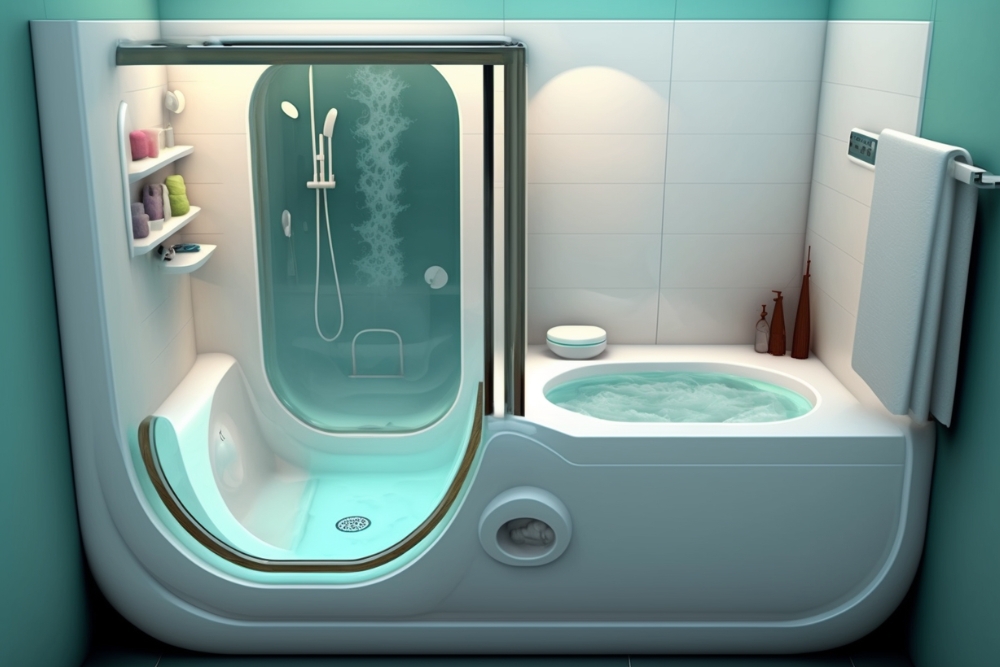Bathroom Appliances: Essential Components for Your Restroom Space
Bathroom appliances are integral components that contribute to the functionality, comfort, and aesthetics of your restroom space. From basic necessities to luxury additions, these fixtures play a crucial role in daily life. This article explores the various types of bathroom appliances, their purposes, and considerations for selecting the right ones for your home.

How do you choose the right toilet for your bathroom?
Selecting the appropriate toilet involves considering factors such as bathroom size, water efficiency, and personal preferences. Standard toilets typically have a round or elongated bowl, with the latter providing more comfort but requiring more space. Water-efficient models, such as dual-flush toilets, can help reduce water consumption and lower utility bills.
When choosing a toilet, consider the rough-in measurement, which is the distance from the wall to the center of the drainpipe. Common rough-in sizes are 10, 12, and 14 inches, with 12 inches being the most standard. Height is another important factor, with comfort height toilets (typically around 17-19 inches from floor to seat) gaining popularity for their ease of use, especially for taller individuals or those with mobility issues.
What features should you look for in a bathroom sink?
Bathroom sinks come in various materials, including porcelain, glass, stone, and metal. When selecting a sink, consider the size of your bathroom, the desired style, and practical aspects such as ease of cleaning and durability. Pedestal sinks are popular in small bathrooms for their space-saving design, while vessel sinks offer a modern, artistic touch.
Important features to consider include the number of faucet holes, overflow drains to prevent water spillage, and the sink’s depth and width. For families with young children, undermount sinks paired with a solid surface countertop can provide a seamless, easy-to-clean solution. Additionally, consider the sink’s compatibility with your chosen faucet style and any storage needs you may have.
How can you enhance your shower experience?
Showers have evolved from basic necessities to luxurious spa-like experiences. When upgrading or installing a new shower, consider factors such as the shower head type, water pressure, and additional features. Rain showerheads provide a gentle, relaxing flow, while handheld showerheads offer flexibility and ease of cleaning.
For a more immersive experience, consider multi-function showerheads that offer various spray patterns or body sprays that can be installed along the shower walls. Thermostatic shower valves can maintain a consistent water temperature, enhancing comfort and safety. For those looking to create a spa-like atmosphere, steam showers or digital shower systems with programmable settings can elevate the bathing experience.
What are the benefits of installing a bathtub?
Bathtubs offer a relaxing retreat and can add value to your home. They come in various styles, including alcove tubs (built into three walls), freestanding tubs, and corner tubs. When considering a bathtub, think about the available space, your bathroom’s layout, and your personal preferences for bathing.
Acrylic tubs are lightweight and retain heat well, while cast iron tubs are durable and provide excellent heat retention but are significantly heavier. For those seeking therapeutic benefits, whirlpool tubs with jets can provide a massage-like experience. Soaking tubs, which are typically deeper than standard tubs, allow for full-body immersion and a more luxurious bathing experience.
How do bathroom appliances impact water efficiency and conservation?
Bathroom appliances play a significant role in household water consumption and efficiency. Modern toilets, sinks, showers, and bathtubs are designed with water conservation in mind, offering features that can significantly reduce water usage without compromising performance.
Low-flow toilets, which use 1.28 gallons per flush or less, can save thousands of gallons of water per year compared to older models. Water-efficient showerheads and faucet aerators can reduce water flow while maintaining adequate pressure. Dual-flush toilets allow users to select the appropriate flush volume based on waste type, further conserving water. When selecting bathroom appliances, look for WaterSense-labeled products, which meet EPA criteria for water efficiency and performance.
| Appliance Type | Standard Usage | Water-Efficient Usage | Potential Annual Savings |
|---|---|---|---|
| Toilet | 3.5-7 gpf | 1.28 gpf or less | Up to 13,000 gallons |
| Showerhead | 2.5 gpm | 2.0 gpm or less | Up to 2,900 gallons |
| Faucet | 2.2 gpm | 1.5 gpm or less | Up to 700 gallons |
Prices, rates, or cost estimates mentioned in this article are based on the latest available information but may change over time. Independent research is advised before making financial decisions.
Bathroom appliances are essential components that contribute to the functionality, comfort, and efficiency of your restroom space. By carefully considering your needs and the various options available, you can create a bathroom that is both practical and enjoyable to use. From water-saving toilets to luxurious bathtubs, the right combination of appliances can transform your bathroom into a personal oasis while promoting sustainability and conservation.






